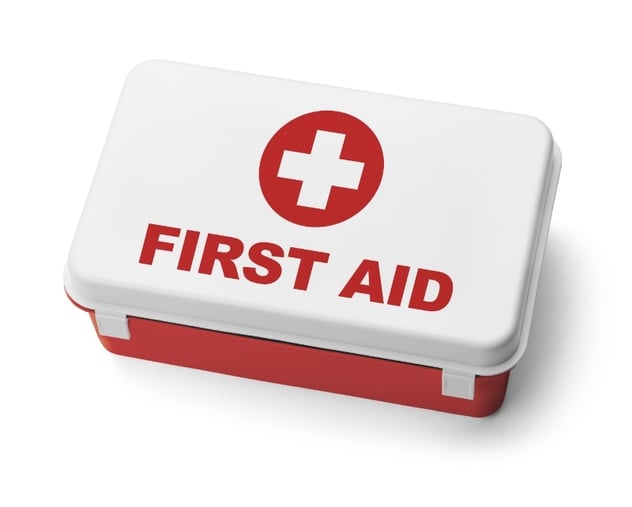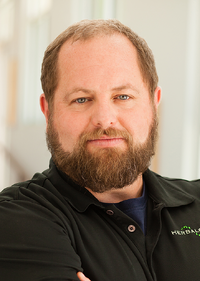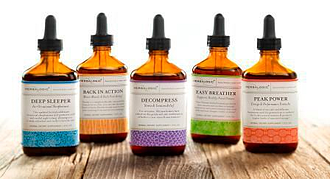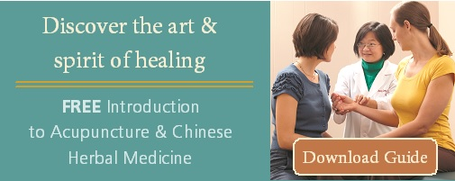Reprinted from HerbalEGram, Volume 7, Number 10, with permission from the American Botanical Council. www.herbalgram.org.
A patented Chinese herbal medicine has successfully completed Phase II clinical trials in the United States and will soon begin Phase III investigations, raising the possibility that it could become the first Traditional Chinese Medicine (TCM) product to obtain drug approval from the US Food and Drug Administration (FDA).1
The product, Compound Danshen Dripping Pill (also referred to as Cardiotonic Pill), is produced by Tianjin Tasly Pharmaceutical Co. Ltd. in Tianjin, China. It contains the extract of the root of Chinese salvia (Salvia miltiorrhiza; known as danshen in Chinese), the extract of the root of notoginseng (Panax notoginseng; known as sanchi or tien-chi ginseng), and synthetic borneol, an active ingredient that replaces the more expensive natural borneol found in cardamom (Elettaria cardamomum var. cardamomum), ginger (Zingiber officinale), and other spices.1,2,3 According to Tasly’s website, the pill is sold as a prescription drug in China, Vietnam, Pakistan, South Korea, India, and the United Arab Emirates and reportedly is taken by about 10 million people every year to treat angina and coronary heart diseases.3 Last year, its international sales brought in a reported $148 million.
Danshen has been used in TCM for many years to improve patients’ circulation and to treat cardiovascular diseases.3 The oldest documented record of danshen as a medical agent is found in Shen Nun Ben Cao (The Divine Husbandman’s Classic of the Materia Medica), dated at about 200 CE.4 Consumers in the United States are currently able to buy and use danshen and notoginseng either as whole, raw herbs or in herbal dietary supplements. An FDA drug approval would give Tasly protection of market exclusivity for the pill’s ingredient combination, specifically in dripping pill form and for the cardio-indication as a prescription drug, because it specifically intends to treat and prevent disease.5 (The product cannot qualify for over-the-counter drug regulation because the condition it intends to treat is not a self-diagnosable, self-treatable, and self-limiting condition.)
“This product, known earlier as Fufang Danshen Pian (tablet of salvia with other ingredients), has been used in China for many years, and there have been efforts to get it approved for use outside China for decades,” said Subhuti Dharmananda, PhD, director of the Institute for Traditional Medicine and Preventative Health Care in Portland, Oregon (e-mail, September 16, 2010).
"The biggest problem,” he said, “is that it is for very serious cardiovascular disorders—mainly angina pectoris—and so it is difficult to integrate it into modern medicine. There were some previous concerns about borneol being potentially toxic, but I think that has been alleviated in recent years. Also, the problem of inconsistency of the botanical constituents is a big issue. In particular, notoginseng grows in southwestern China, an area with difficult climatic conditions that can lead to considerable variability of the chemistry in the root.”
In order to conduct human clinical trials, a product must be designated by FDA as an investigational new drug (IND), which requires varying levels of evidence that the product is safe for testing in humans and that the clinical protocol is suitably designed.5 (Compound Danshen Dripping Pill was the first TCM product to obtain IND designation in the United States in 1997.2) Then, Phase I consists of testing the drug within small groups to determine safety, dosage range, and side effects, and in Phase II researchers study the drug on a larger group of people to determine safety and efficacy. In its third phase of clinical trials, Compound Danshen Dripping Pill will be studied on large groups of people to confirm efficacy, monitor side effects, compare it to commonly used treatments, and collect safety information.6
If Phase III investigations are completed, Tasly can decide to submit a new drug application (NDA) to FDA, which then considers if the drug used for its intended purposes is safe and effective, if the benefits outweigh any known adverse side effects, if the drug’s proposed labeling is appropriate, and if the drug can be manufactured in a way that preserves its identity, strength, quality, and purity.7
An FDA drug approval for Compound Danshen Dripping Pill, which could take 10 years from the beginning of Phase III trials, might be significant, as it entails official recognition of the safety and efficacy of an herbal preparation in the conventional healthcare system, said William Morris, PhD, DAOM, LAc, president of the Academy of Oriental Medicine at Austin, TX (e-mail, September 23, 2010). “But it could also mean that there is a trend toward ‘pharmaceutical herbs,’” Dr. Morris added.
Additionally, of the near 3,000 medicines currently in development stages in the United States, only 25 new drugs were approved in 2009, evidence of the extreme difficulty in bringing a new drug to market in the United States.8 It now costs a reported $800 million to $1.3 billion to conduct the research and development needed to bring a new drug to the market, and generally takes 10 to 15 years for most new drugs to go from the laboratory to market.8,9
“If the drug successfully gains approval in the US through the NDA process, it will be the first time a multi-sourced botanical ‘new’ drug—one derived from more than one plant [or] plant part—is approved by FDA, and the first botanical to achieve a cardiovascular indication,” said Freddie Ann Hoffman, MD, a former FDA official and founder of HeteroGeneity, LLC, a Washington, DC-based consulting firm that advises companies seeking to market botanically-based drugs (e-mail, August 17, 2010). Dr. Hoffman noted that there are approximately 450 IND and pre-IND applications for botanicals that have been submitted to FDA.
Many botanical product sponsors experience great difficulty in completing the FDA clinical trial process due to the complex chemical nature of the products’ multiple plant components. To address this situation, in June of 2004, FDA released Guidance for Industry for Botanical Drugs.10 This document advises potential botanical drug sponsors by describing both the application process and recommending how chemically complex products might satisfy the requirements of FDA’s rigorous drug review and approval process. Though presenting somewhat different regulatory policies for botanical INDs than those applied to other drugs, including a somewhat easier process for Phase I and II trials, the document states that botanicals are still treated like any other new drug in order to gain full drug approval.5
According to the FDA Center for Drug Evaluation and Research (CDER) Botanical Review Team, the most difficult issue for new botanical drugs is how to ensure "therapeutic consistency" of all marketing batches, which is typically easier for synthetic, purified small molecule drugs (e-mail, C. Rice [FDA], August 17, 2010). The Botanical Review Team noted that it thinks a comprehensive approach can address this situation. “Besides conventional [chemistry, manufacturing, and controls] measures, the sponsor may use clinically relevant bioassay, clinical dose-response data, and testing multiple batches in Phase III clinical trials to demonstrate the consistency of a botanical drug product.”
Scientists working with single-herb botanicals and TCM products, which usually are mixtures of herbs, also face challenges in showing evidence that each component of their complex mixtures contributes to the product’s claimed effects. This requirement may be impossible for botanical researchers to meet before FDA revises the related regulation, said the FDA Botanical Review Team.
Additionally, few conventional health professionals in the United States practice TCM, said Dr. Hoffman. “Therefore the product and its uses must be ‘translated’ into US medical practice. This goes for claims, dosage forms, and schedules (consumers want once- or at most twice-a-day dosing). Although the indication may be derived from traditional use, the pivotal clinical study (or studies) must address what will go in the drug’s Package Insert—the prescribing information for the health practitioner. The US approach to medicine is not individualized in the same way that TCM is practiced.”
Though difficult, it is not impossible for botanicals to successfully complete FDA’s drug approval process. In 2006, FDA gave drug approval to Veregen® Ointment (Medigene AG, Martinsried/ Munich, Germany), which contains a proprietary blend of phytochemicals produced from a partially purified water extract of green tea leaves (Camellia sinensis, Theaceae).10 Veregen was the first botanical approved as a drug under the 1962 federal law known as the Kefauver-Harris Amendments, which requires drugs to be proven both safe and effective prior to being marketed in the United States.
No botanicals have achieved drug designation since Veregen (C. Rice, e-mail, August 17, 2010), and it is possible that Compound Danshen will also fail to obtain FDA drug approval.
“While entering into Phase III usually means that there is sufficient interest on the part of the sponsor to proceed—based on prior studies—the success of the trial lies strictly with the data itself, which determines whether FDA can approve the drug for marketing,” said Dr. Hoffman. “Even drugs produced by large, global pharma companies, which have gone through rigorous preclinical testing, can ‘miss the mark’ in Phase III.” Some examples include Medivation's drug Dimebon for Alzheimer's disease,11 Merck’s HIV drug vicriviroc,12 and Inspire Pharmaceuticals’ Prolacria for the treatment of dry eye disease.13
—Lindsay Stafford
References1. Chinese patent traditional medicine first time passes U.S. FDA crucial clinical trials. Xinhua. August 7, 2010. Available at: http://www.news.xinhuanet.com/english2010/china/2010-08/07/c_13434173.htm. Accessed August 12, 2010.
2. Xiaohui Z, Xinfeng Z, Xin Z, Shixiang W, Yinmao W, et al. Determination of the main bioactive metabolites of Radix Salvia miltiorrhizae in Compound Danshen Dripping Pills and the tissue distribution of Danshensu in rabbit by SPE-HPLC-MS. J Sep Sci. 2007:30;851–857.
3. Herbal medicine. Tianjin Tasly Pharmaceutical Co. Ltd. website. Available at: http://www.tasly.com/en_web/Product_list1.aspx. Accessed August 18, 2010.
4. Chen J, Chen T. Chinese Medical Herbology and Pharmacology. City of Industry, CA: Art of Medicine Press Inc., 2001;636-637.
5. Amin R, Bayne H. FDA issues final guidance for industry regarding botanical drug products. HerbalGram. 2004; 64:52-53. Available at: http://www.cms.herbalgram.org/herbalgram/issue64/article2741.html.
6. Understanding clinical trials. ClinicalTrials.gov website. Available at: http://www.clinicaltrials.gov/ct2/info/understand#Q01. Accessed August 18, 2010.
7. New drug application (NDA). Food and Drug Administration website. Available at: http://www.fda.gov/Drugs/DevelopmentApprovalProcess/HowDrugsareDevelopedandApproved/ApprovalApplications/NewDrugApplicationNDA/default.htm. Accessed August 18, 2010.
8. Pharmaceutical Research Companies Receive Approval for 34 Innovative Treatments in 2009. New Drug Approvals in 2009: Presented by America’s Pharmaceutical Research Companies. The Pharmaceutical Research and Manufacturers of America. Available at: http://www.phrma.org/new_drug_approvals. Accessed October 1, 2010.
9. Woodcock J, Woosley R. The FDA critical path initiative and its influence on new drug development. Annu Rev Med. 2008;59:1-12.
10. FDA approves special green tea extract as a new topical drug for genital warts; expert says development marks the birth of a “new industry.” HerbalGram. 2007;74:62-63. Available at: http://www.cms.herbalgram.org/herbalgram/issue74/article3120.html.
11. Carroll J. Medivation's Dimebon fails Phase III for Alzheimer's, shares collapse. FierceBiotech. March 3, 2010. Available at: http://www.fiercebiotech.com/story/breaking-news-medivations-dimebon-fails-phase-iii-alzheimers/2010-03-03. Accessed October 1, 2010.
12. Horstmann A. Merck defers seeking FDA approval of Vicriviroc for treatment-experienced HIV patients. The AIDS Beacon. February 2, 2010. Available at: http://www.aidsbeacon.com/news/2010/02/02/vicriviroc-not-approved-for-treatment-experienced-hiv-patients/. Accessed October 1, 2010.
13. Inspire Pharmaceuticals stops Prolacria development program, amends agreement with Allergan. The Associated Press. August 25, 2010. Available at: http://www.finance.yahoo.com/news/Inspire-Pharma-amends-apf-3388997606.html?x=0&.v=1. Accessed October 1, 2010.
 Kirsten Hurder-Karchmer was teaching linguistics at the University of Texas when she began having some serious auto-immune health issues. After seeing several medical doctors and having surgery she turned to AOMA faculty member Jamie Wu for acupuncture and Traditional Chinese Medicine treatments. Amazed by the results, Kirsten started looking into acupuncture as a career choice. She recalls, “I was already a teacher and thought that to be a good doctor, it required a great deal of patient education, so it seemed like a good match for me.”
Kirsten Hurder-Karchmer was teaching linguistics at the University of Texas when she began having some serious auto-immune health issues. After seeing several medical doctors and having surgery she turned to AOMA faculty member Jamie Wu for acupuncture and Traditional Chinese Medicine treatments. Amazed by the results, Kirsten started looking into acupuncture as a career choice. She recalls, “I was already a teacher and thought that to be a good doctor, it required a great deal of patient education, so it seemed like a good match for me.”



 All students at the AOMA Graduate School of Integrative Medicine are required to study both acupuncture and herbs. Some students tend to gravitate toward one or the other of those disciplines, as is the case with AOMA alumnus David Jones, who sees himself more as an “herb guy.”
All students at the AOMA Graduate School of Integrative Medicine are required to study both acupuncture and herbs. Some students tend to gravitate toward one or the other of those disciplines, as is the case with AOMA alumnus David Jones, who sees himself more as an “herb guy.” While Jones still sees a few acupuncture patients, he says most of his time is focused on building Herbalogic into a national brand. Although he acknowledges it is a lofty goal, “We have a pretty good start on it. We sell retail in about 60 outlets in four states and all 17 Texas Whole Foods. We have recently extended ownership to two nationally recognized marketing and branding professionals who bring over 40 years of experience to the table and we have hired on a couple of brokers so you can buy Herbalogic from Fayetteville, Arkansas to Boerne, Texas. We also have a large number of happy practitioners. Although we sell mostly retail our line makes a very accessible entry point to herbs for some patients who are resistant to the idea of barks, bugs, lizards and leaves” Jones says. “To develop the line, we made a list of the most common ailments we saw in the clinic. We then matched those ailments with herbal formulas we knew would work really well and work really well in an extract form.” The original five conditions the business partners decided to address are allergies, insomnia, stress, low energy, and musculoskeletal pain. Four new formulas are currently being tested and as Jones says, “some of them are going to change lives.”
While Jones still sees a few acupuncture patients, he says most of his time is focused on building Herbalogic into a national brand. Although he acknowledges it is a lofty goal, “We have a pretty good start on it. We sell retail in about 60 outlets in four states and all 17 Texas Whole Foods. We have recently extended ownership to two nationally recognized marketing and branding professionals who bring over 40 years of experience to the table and we have hired on a couple of brokers so you can buy Herbalogic from Fayetteville, Arkansas to Boerne, Texas. We also have a large number of happy practitioners. Although we sell mostly retail our line makes a very accessible entry point to herbs for some patients who are resistant to the idea of barks, bugs, lizards and leaves” Jones says. “To develop the line, we made a list of the most common ailments we saw in the clinic. We then matched those ailments with herbal formulas we knew would work really well and work really well in an extract form.” The original five conditions the business partners decided to address are allergies, insomnia, stress, low energy, and musculoskeletal pain. Four new formulas are currently being tested and as Jones says, “some of them are going to change lives.”

